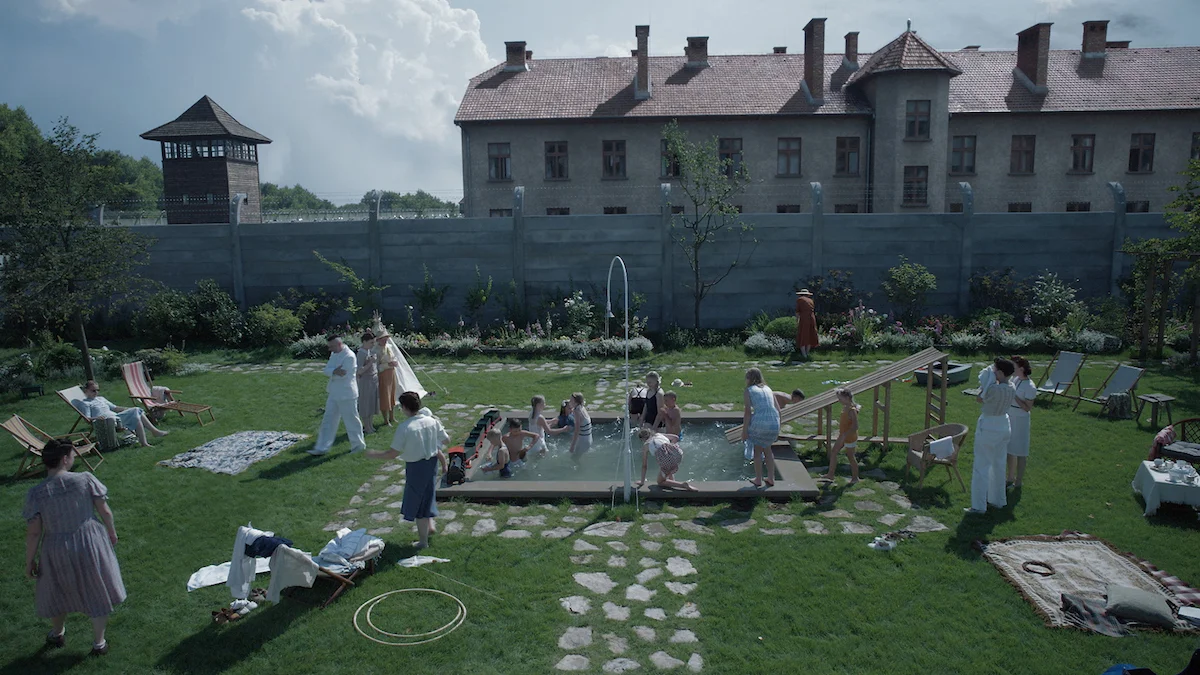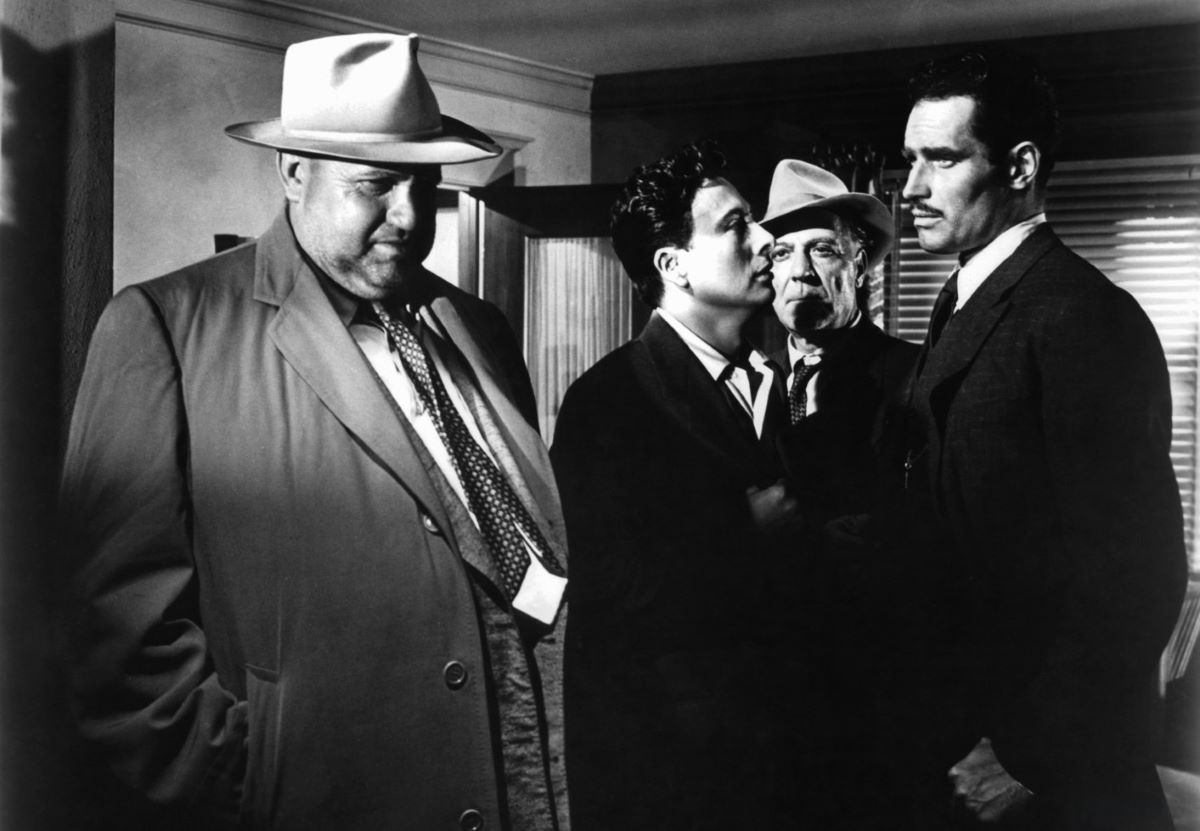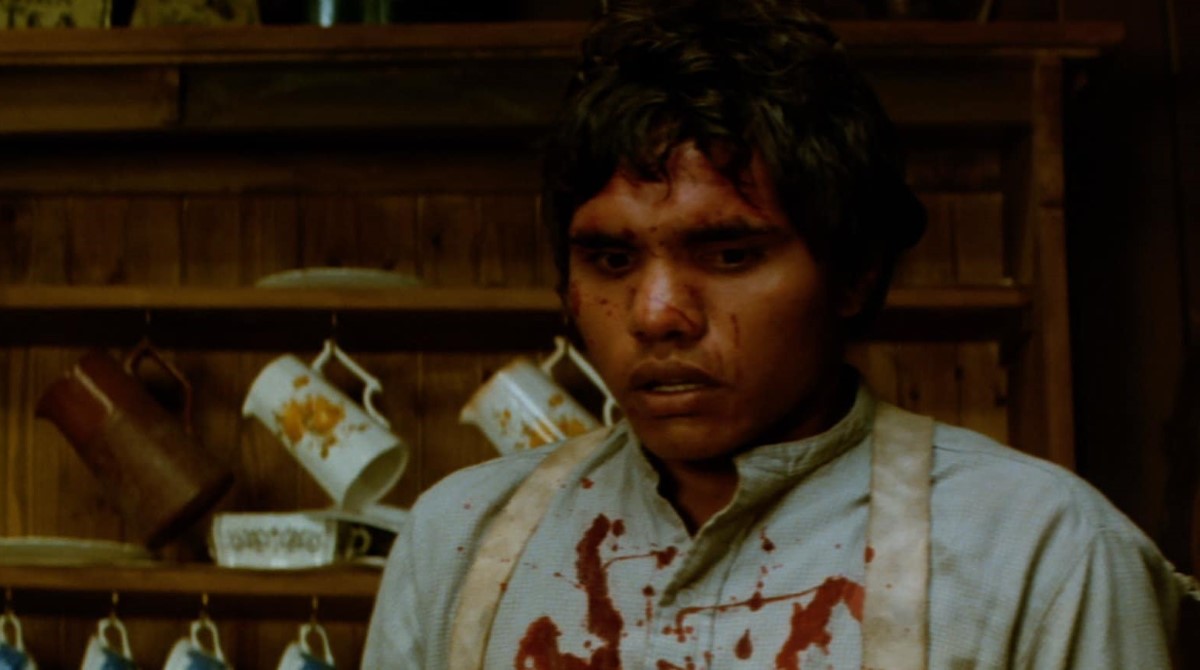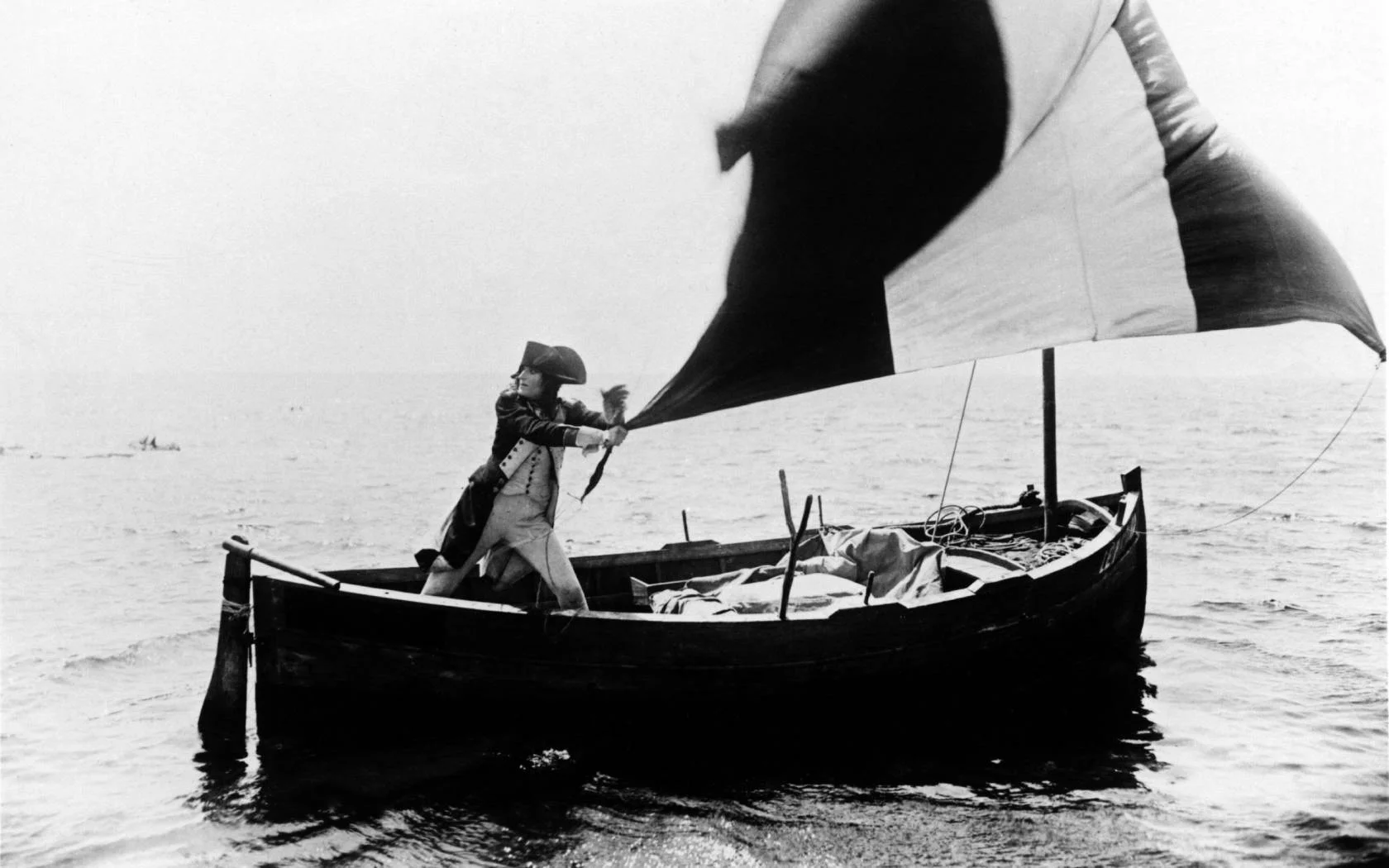Beyond the Wall: Witnessing Evil Through the Banality of Everyday Life in The Zone of Interest
Black. Still black. Nothing but black. For a few minutes—a stretch that feels endless to the audience in the theater—the screen projecting Jonathan Glazer‘s The Zone of Interest, following the title’s fleeting appearance/disappearance, remains stubbornly empty and dark. Is this suggesting we must grapple with the invisible (with what cannot be shown)? Is it indicating that this is but the first of several thresholds the film will challenge us to confront? Are we being prepared to cross the boundary between our world and the one into which the film is about to plunge us? But is our world so different from that of Commander Höss’s little family, living in a cozy house with a garden and small pool on the edge of the Auschwitz camp?
The screen is black but not silent: the absence of images is offset by a flood of sounds. The music of Mica Levi that resonates over the dark screen, distorted and dissonant, is merely the overture of a score that will alternate with Johnnie Burn’s sound design throughout the film, making us hear the noises and screeches of hell. We will never see what happens inside the camp. At most, we might see in the distance the thick smoke billowing from chimneys signaling that the crematoria, for which Höss is responsible, are operating at full capacity.
We do not see, and we do not watch, but we hear. Screams, shouts, threats, pleas. Gunshots, barking dogs, orders yelled from afar, machine gun bursts, grunts, booms, barks, moans. A constant, deafening murmur of death. The sound of planned genocide enters our ears like a ceaseless drip, creating an acoustic discomfort that pushes us to imagine what is happening beyond the wall, where our gaze cannot reach.
Glazer—adapting and streamlining Martin Amis’s novel of the same name—shows us only the “outside” of the camp. The daily life of the little family. Swimming in the river. Tending to the greenhouse and garden. Dining in the dining room. Raising the children. Distributing the linens and furs taken from Jewish women locked in the camp. The commander and his wife Hedwig sleep in separate beds, yet they are convinced—she, played by Sandra Hüller, openly says so—that this is paradise. Their Paradise. To say we are witnessing yet another depiction of the banality of evil would be trite. Trite because here, Evil is anything but banal. It’s rather cynical, cold, contemptuous. Normal. The hell of others is the condition to protect and preserve their paradise.
Jonathan Glazer films the everyday with fixed, deliberately static shots, often using surveillance cameras placed all around the villa. Almost no close-ups. The frames like cages in which the characters are imprisoned. The administration of the Holocaust and the cremation of Jews as the planning of an ordinary work procedure. Are 400,000 Hungarian Jews about to arrive? It’s necessary to ensure that the ovens can “handle the job.” This is how they speak, in their elegant uniforms of death, the Nazi officers. The maintenance of horror. The scientific planning of mass death. The cold, detached face of power crime. Who loves horses and flowers but has no empathy for human beings.
That the Holocaust was invisible and unshowable we already knew, at least since Claude Lanzmann’s Shoah.
Jonathan Glazer confirms this with a film that dares to assume the viewpoint of the executioners and murderers. Those who after the war absolved themselves by claiming they were just following orders. Millions of human beings gassed in ovens as normal, ordinary administration. The bureaucracy of horror, as Godard would say. The result is chilling. When Commander Höss reads the fairy tale of Hansel and Gretel to his daughter, telling how the girl manages to escape and free herself by shoving the witch into an oven and burning her, does it perhaps hint at an anthropological tension towards burning? Who knows. Who is and what does that girl filmed with a thermal camera do, who in a spectral black and white, like a photographic negative, seems to sow something in the fields? Why does the screen turn completely red and then white on two occasions? And what does Höss see when, vomiting blood, he pierces through time and sees with us the piles of worn-out shoes and crutches stacked in the showcases of contemporary Auschwitz turned into a perpetual horror museum?
In what time and place are we, the viewers? Are we really beyond the threshold of Evil? What effects has the film had on us? Has it ignited the imagination? Or has it silenced and plunged it into aphasia? And those who know nothing of what really happens there, beyond the wall, in the sonic hell of black, how do they emerge from watching the film?
Questions. Doubts. Queries. Thoughts. Silence. One certainty remains: exiting a film like this, one is enveloped in a glacial, subtle discomfort. And with no certainty about where, today, lies the threshold the film did not make us cross.






1 thought on “Hearing the Silence: Glazer’s “The Zone of Interest” and the Unseen Horrors of Auschwitz”
Today, it’s the Zionists who commit genocide in Gaza.
While women and children in Gaza get slaughtered, the rich Jews in Israel eat, dance, and party all night long.
Zionists are worse than Nazis.
Nazis hid their horrors.
Zionists show the horror all around the world and cheer and celebrate the bloodbath.